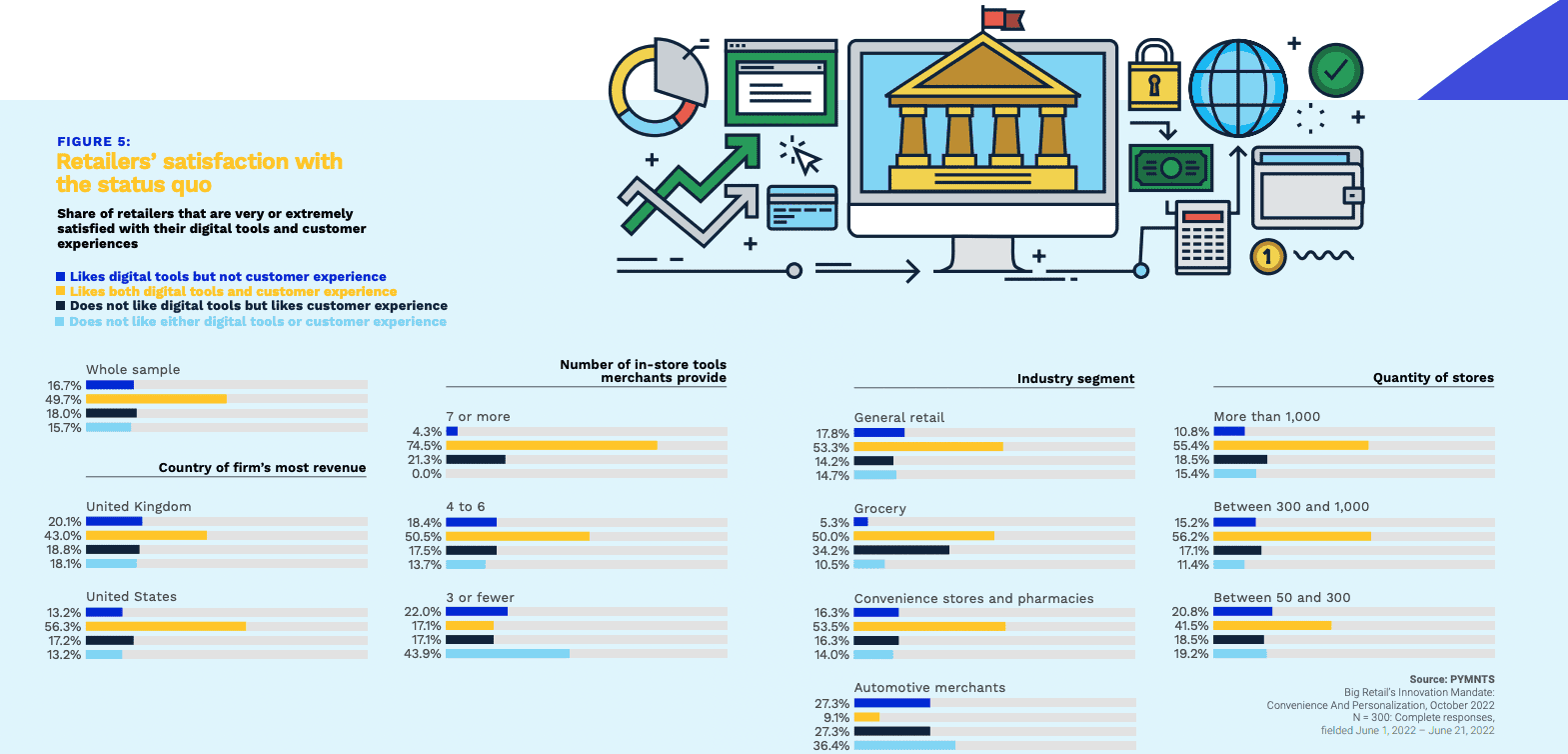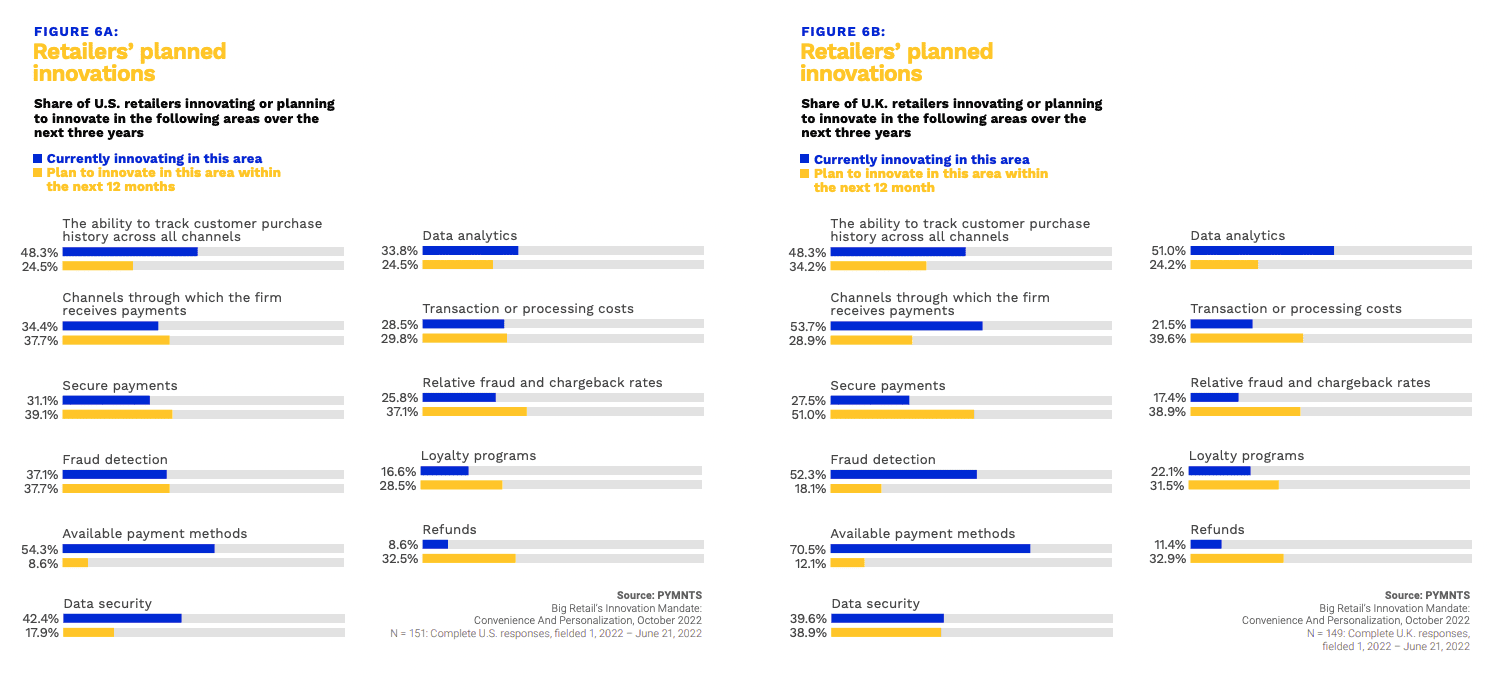
While the past three years of digital transformation in retail has led to a rapid expansion of online and mobile selling tools and automated processes, a new survey of over 150 brands showed high levels of dissatisfaction over existing tech innovations.
Although half of merchants said they were pleased with their digital progress, an equal number said they haven’t gone nearly far enough, with over 70% of retail executives in the United States and United Kingdom saying digital-first tools are a necessity to lock in loyalty.
Examining the state of digital transformation in what PYMNTS categorizes as “big retail” — in this case U.S. and U.K. merchants with a minimum of 50 store locations and revenues of at least $1 billion for U.S.-based companies or 100 million pounds (about $127 million) for U.K. operators — we found a high number of retailers who said more digital innovation is what’s needed now.
The PYMNTS study “Big Retail’s Innovation Mandate: Convenience and Personalization,” produced in collaboration with ACI Worldwide and based on surveys of 300 retail operations, found at a baseline that “only around half of retailers in the U.S. and the U.K. believe that they have the right mix of digital tools to serve their customers well.
This dissatisfaction is leading many retailers to launch innovation strategies designed to improve the customer experience and their digital capabilities, such as those that collect and analyze customer purchasing data.
The research found that “basic digital tools”— like mobile apps, touchless QR and barcode scanners, coupons and rewards — are well integrated into retail operations, with just about half of those surveyed saying their current tools and features deliver on these experiences.
Digging into stats of specific categories, 53% of general retailers and 54% of pharmacy and convenience stores said their current digital tools are sufficiently advanced for the shopping experiences they need to offer. It drops from there, with 50% of grocery and 9% of automotive merchants saying they’re content with digital tools and customer experience as they are now.
This indicates a massive market of retailers shopping for themselves — solution shopping, to be exact — to match the satisfaction reported by more digitally progressed peers and competitors.
“Retailers that use more digital tools enjoy them and the customer experiences they help create,” the study stated, with research finding that “three-quarters of retailers that currently use the most digital tools — seven or more — were satisfied with the digital features employed and the customer experiences created.”
PYMNTS found that just 17% of those using the fewest digital tools (three or less) are satisfied with the shopping experience they are currently offering.

Data, Digital Go Hand-in-Hand
U.S. retailers have pulled ahead of their U.K. counterparts by offering more digital choice, and that’s given them confidence in the corresponding digital shopping experiences they can offer.
“American retailers showed a higher rate of satisfaction with the digital tools they use and their customer experiences than U.K. retailers, at 56% and 43%, respectively,” the study stated. “One would thus expect American retailers to use more digital tools than U.K.-based retailers, and this holds true: U.S. retailers used an average of 5.3 digital tools, whereas U.K. retailers used an average of 4.7 tools.”
Data is the fuel that these tools run on, making payments-related data tracking a vital component of the tools retailers choose and use in popular hybrid digital-physical setups.
The study found a clear correlation here.
“The majority of U.S. and U.K. retailers have introduced or plan to adopt innovations to track omnichannel customer purchasing data,” with 48% percent of U.S. and U.K. retailers having already adopted this strategy, the study found. “An additional 25% of U.S. retailers plan to do so in the next 12 months, along with 34% of retailers in the U.K.”

For all PYMNTS retail and EMEA coverage, subscribe to the daily Retail and EMEA Newsletters.